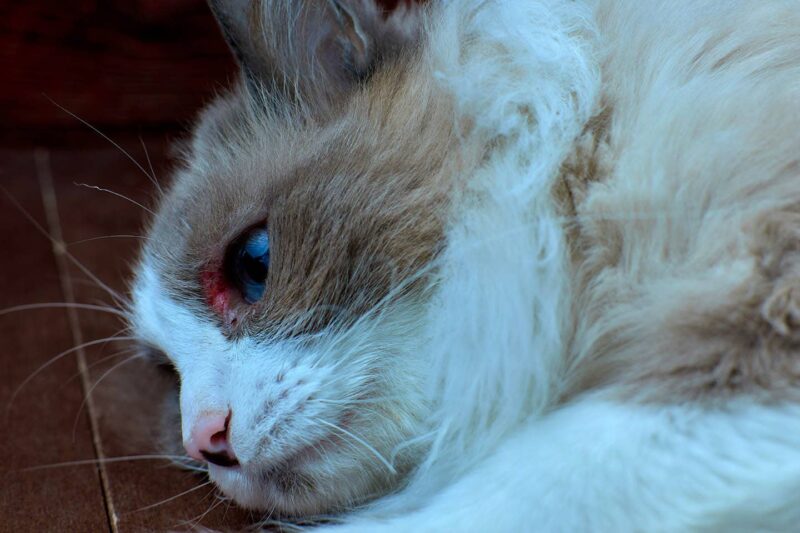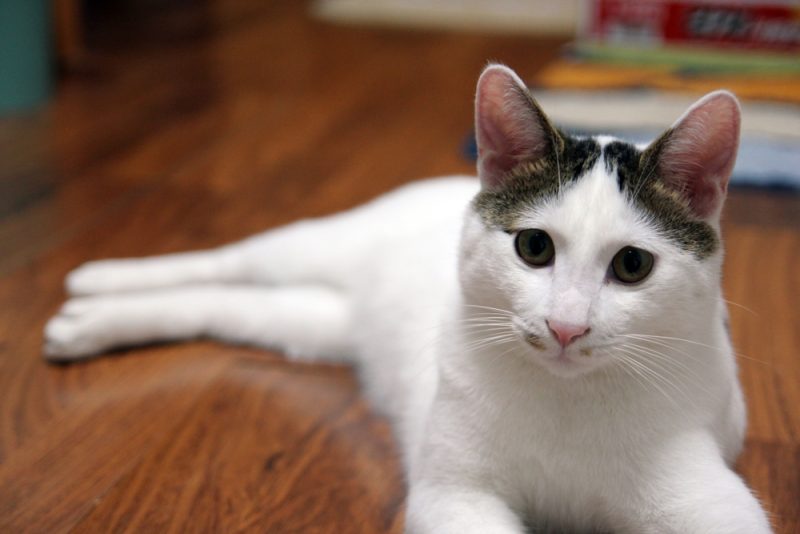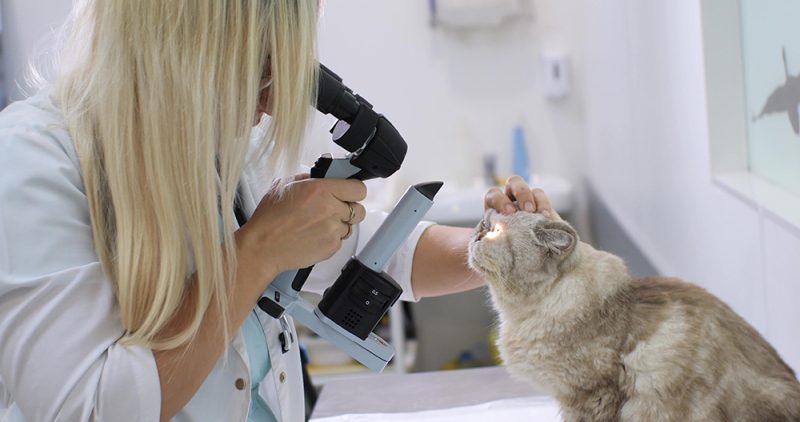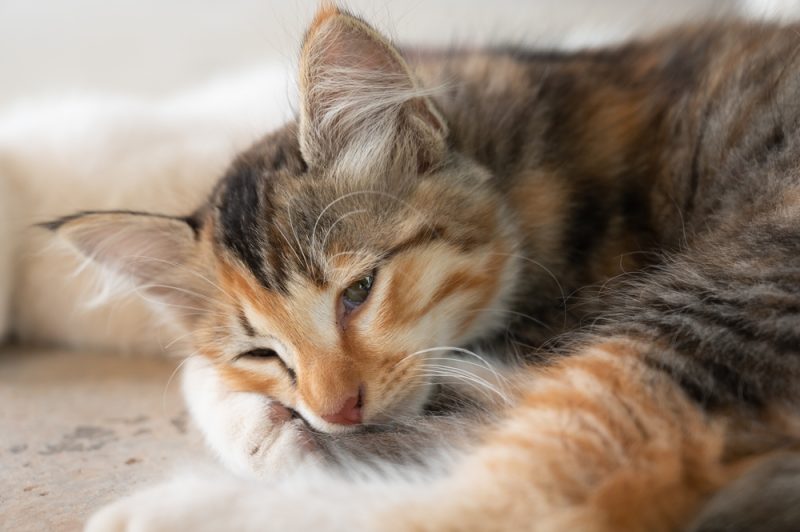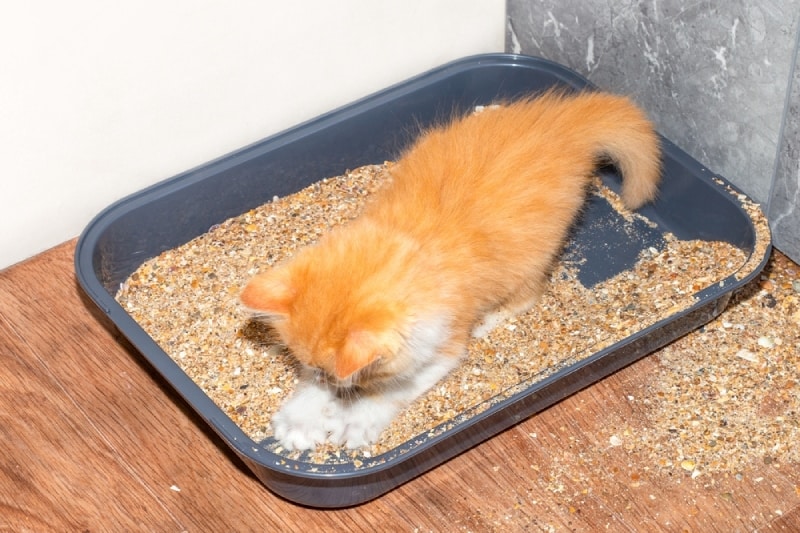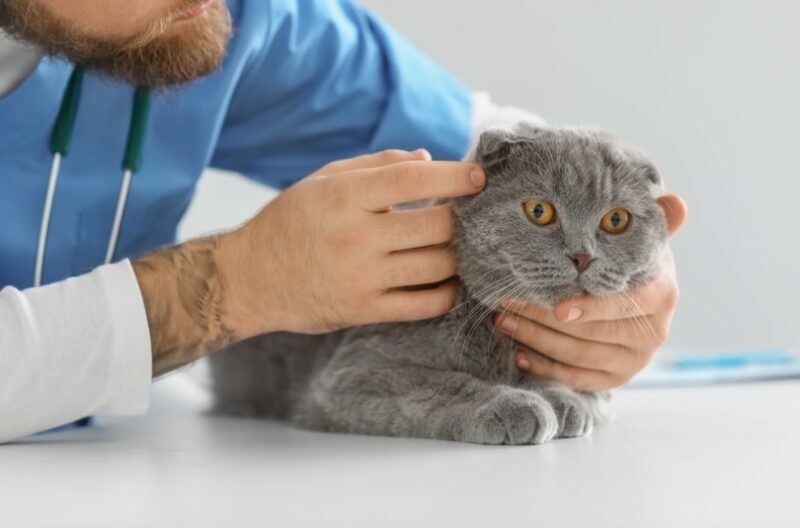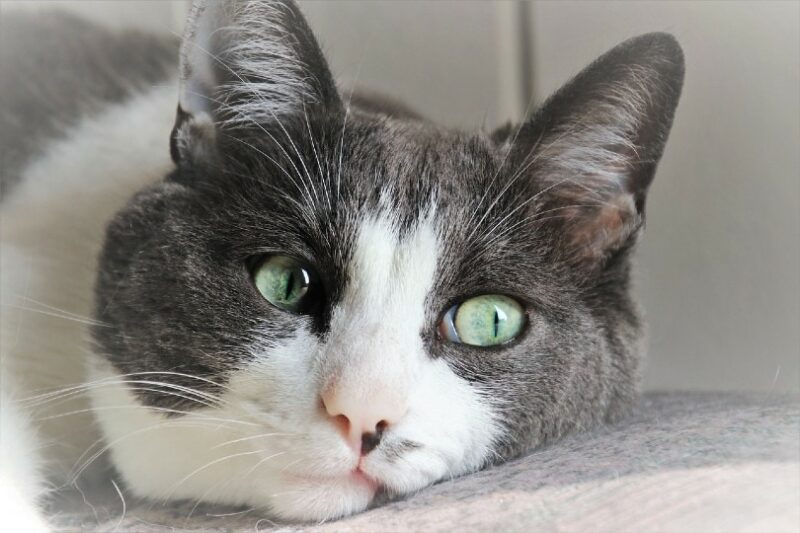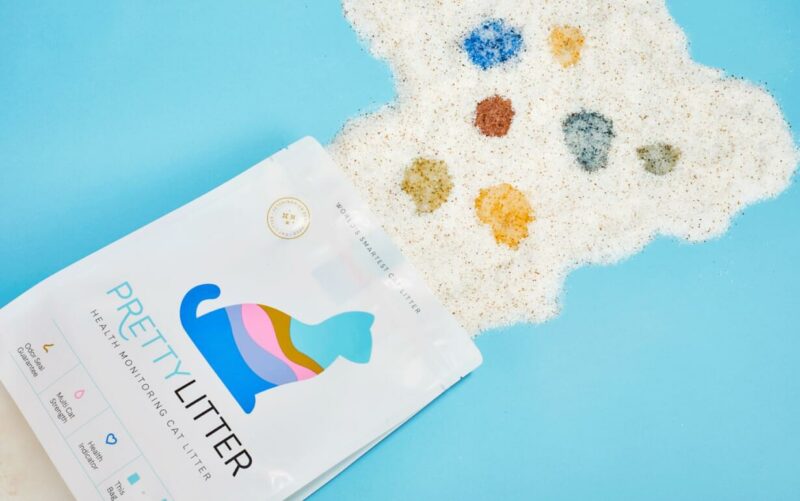In this article
It’s awful when our fur babies get injured, no matter how big or small it may be. However, some injuries are minor enough—such as scratches or tiny cuts—that they don’t warrant a trip to the vet. If your cat gets one of these minor wounds, do you know how to clean and treat it at home? If not, you absolutely should.
That’s why we’re here with these tips and tricks on caring for any minor injuries your cat may get properly. The process is relatively simple and will only take a few minutes at most (not including the time it takes to calm your kitty down first). Read on to find out seven tips and tricks for cleaning a cat’s wound!

Before You Begin
Before you clean out and take care of your pet’s wound, you’ll need first to gather a few supplies. There’s not much, and you should have everything lying around the house.
- Towel
- Cotton balls
- Saline solution
- Syringe
- Disinfectant (either pet wound disinfectant or diluted hydrogen peroxide)
- Bandages
If you don’t have a saline solution on hand, you can easily make one with salt and water.

The 7 Steps to Clean a Cat’s Wound
Now, it’s time to clean out your cat’s wound! Here’s what you need to do, step-by-step.
1. Secure Your Cat
This is where the towel comes in. You can’t clean out your pet’s wound if they’re fighting you, so burrito them up in the towel. This way, your kitty can’t accidentally scratch you, and it should help them feel a bit more secure. If you have another person handy, it might be easier to grab them to help, but you can do it on your own.
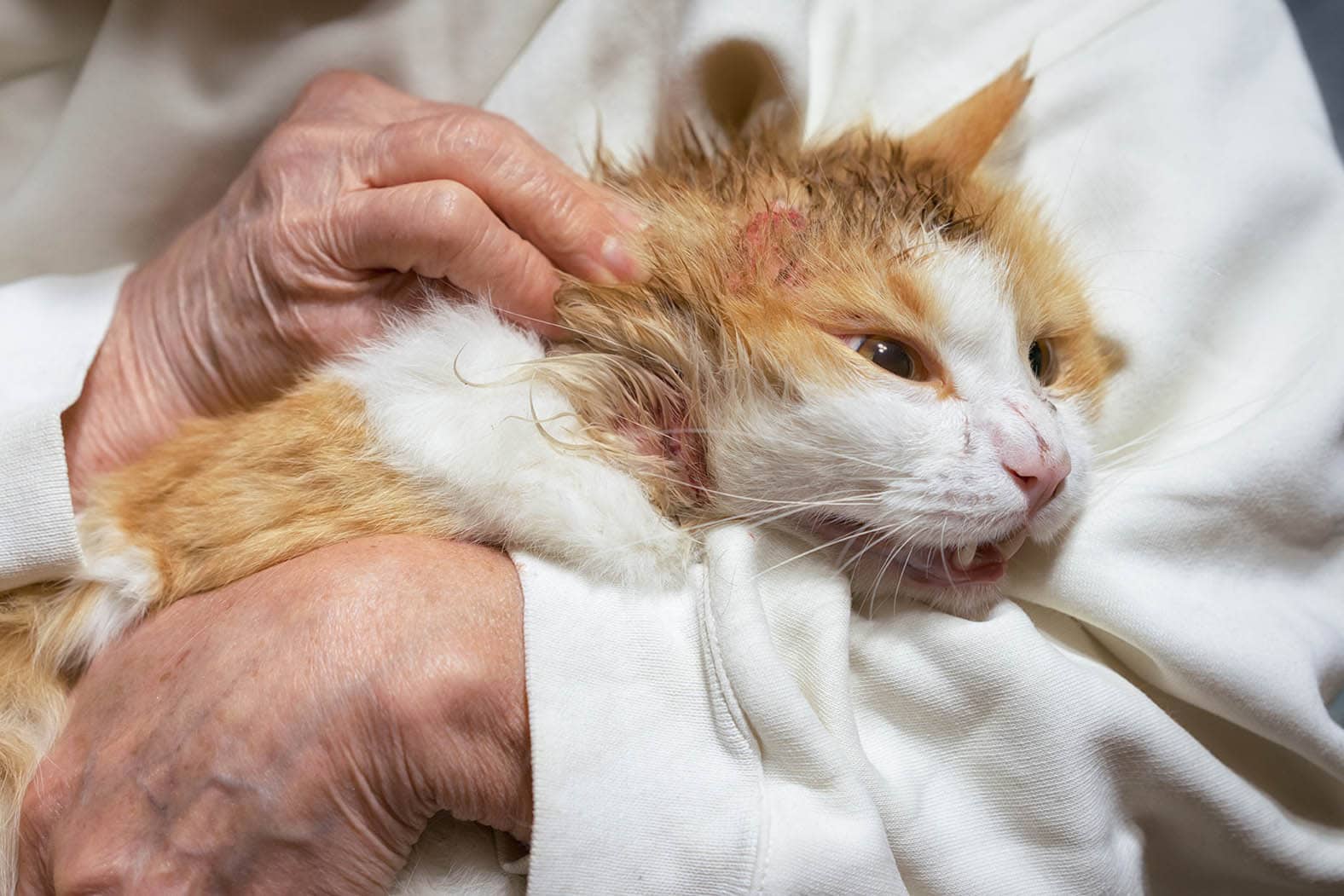
2. Examine the Wound to Ensure It’s Something You Can Deal With
You probably won’t get a great look at your pet’s injury until you get them bundled up, so it might be that the issue actually is something that will require a vet visit. Wounds that are deep or gaping will definitely need a vet visit, but something like a scratch or cut should be fine for you to handle.
3. Apply Pressure
If the wound is bleeding, apply pressure with a cotton ball until it stops.
4. Use the Saline Solution
Once bleeding has stopped, it’s time to use the saline solution to clean it out. You don’t want to just pour it on your cat, so instead, use the syringe to flush out the injury. Do this a few times to make sure it’s been properly cleared of dirt and debris.
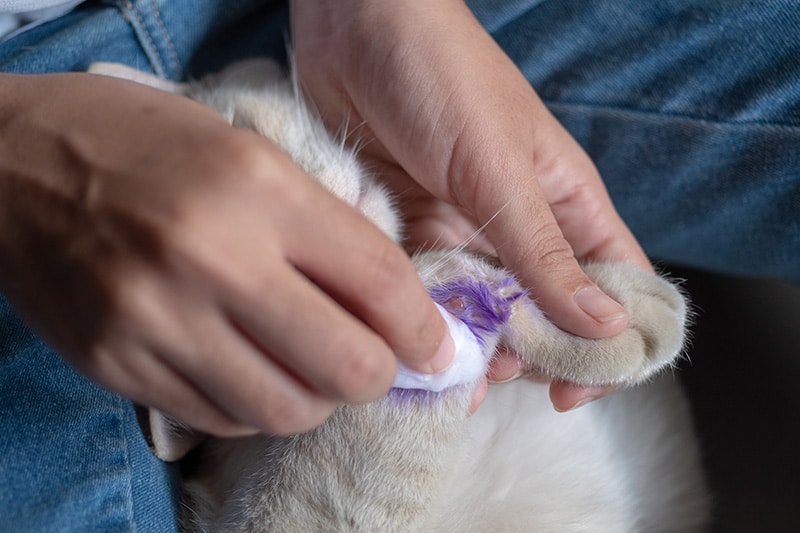
5. Disinfect the Wound
Now, it’s time to disinfect the wound. Apply with a cotton ball or follow any instructions on the bottle on how to apply it.
6. Bandage if Needed
If your pet’s wound is very minor, it’s best left unbandaged (though you’ll need to keep an eye on them so they don’t constantly lick it—investing in a cone of shame might be necessary). But if it’s a less minor injury, bandaging it would be ideal. Just be careful not to wrap a bandage too tightly around your pet, as this could cause decreased circulation.
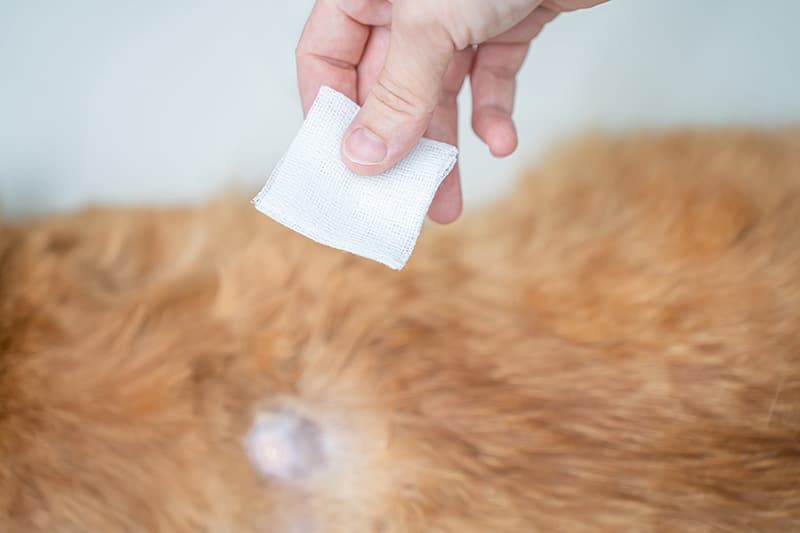
7. Follow Up
Keep an eye on your kitty’s injury. Over the next several days, you’ll need to check in on the wound to ensure it’s healing properly and hasn’t become infected. If the wound isn’t healing as it should, you’ll need to take your pet to the vet to have them checked out. Signs of an infection can include:
- Redness
- Pus
- Hot to the touch
- Foul odor
- Lethargy
If you’re concerned about your pet’s well-being, we recommend you contact a veterinarian.
If you need to speak with a vet but can't get to one, head over to PangoVet. It's an online service where you can talk to a vet online and get the advice you need for your pet — all at an affordable price!


Final Thoughts
Our feline friends will get the occasional injury. But if it’s something we can handle at home, we can save them the trauma of a vet visit on top of the pain. Cleaning out and treating minor injuries is quite easy, and you should have what you need to do it on hand. So, next time your kitty has a minor scrape or scratch, use these tips to flush the wound of dirt and debris, disinfect it, and bandage (if needed).
Be sure, though, that the wound is something that it’s okay to treat at home. Wounds that are deep or gaping should always involve a trip to the vet! If you do treat a minor wound yourself but see that it isn’t healing properly or has become infected in the days after, you’ll also need to visit your vet as soon as possible. When in doubt about whether a wound is something you can treat, talk to your vet, as they will have the best advice.
Featured Image Credit: eremeevdv, Shutterstock
